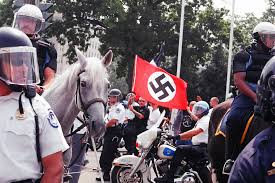From Hate Speech to Violence

September 5, 2019
With social media, the anonymity of hate speech makes it all the more dangerous. Does the First Amendment extend protection to online hate groups who threaten other members of society, or should the severity of the threat be taken into account? And who should be the gatekeepers?
In 2017, the U.S. Supreme Court reached a unanimous decision regarding the First Amendment and freedom of speech. They ruled that there was no exception in the First Amendment for hate speech. Justice Samuel Alito shared:
“Speech that demeans on the basis of race, ethnicity, gender, religion, age, disability, or any other similar ground is hateful; but the proudest boast of our free speech jurisprudence is that we protect the freedom to express ‘the thought that we hate.’”
A majority of polled students at Bob Jones seem to agree to disagree. In the poll, 51.9% of students believe that hate speech should be protected, with some exceptions. Only 16.7% percent of polled students think that hate speech should be protected in every scenario. However, in the same survey, 80% of students agree that people should still face the repercussions their words bring.
Hate speech is protected by the U.S. government, but when do hatred and discriminatory bias become something even more dangerous?
FBI statistics show that reported hate crimes have been on the rise. In 2015, there were a reported 5,850 incidents involving bias based on ethnicity, religion, gender, sexuality, and disability. In 2016, that number rose to 6,121. In 2017, that number rose again to 7,175.
It is reasonable to assume that because hate crimes have been on the rise, hate speech has as well. NYU researchers verified this and concluded that more studies were needed. Professor Rumi Chunara stated, “We found that more targeted, discriminatory tweets posted in a city related to a higher number of hate crimes.” Polled Bob Jones students almost unanimously agree that hate speech does lead to violence with 92% of the students answering yes to the question, “Do you believe hate speech can incite violent crime?”
Online threats are often dismissed as jokes or attempts at provoking others. Giving hatred a place to spread where it isn’t taken seriously or seen as a threat is dangerous. It gives groups a way to indoctrinate others, especially young people.
Under the First Amendment, online hate speech receives just as much protection as printed material. While the First Amendment might protect racism, sexism, and other forms of discrimination, it does not protect implicit death threats. It also does not protect one from consequences; something can be legal but still carry consequences.

